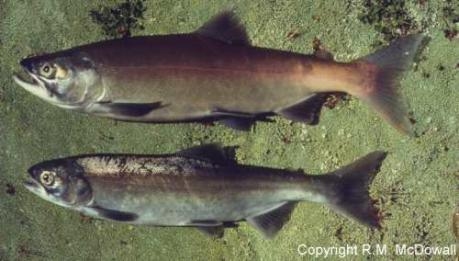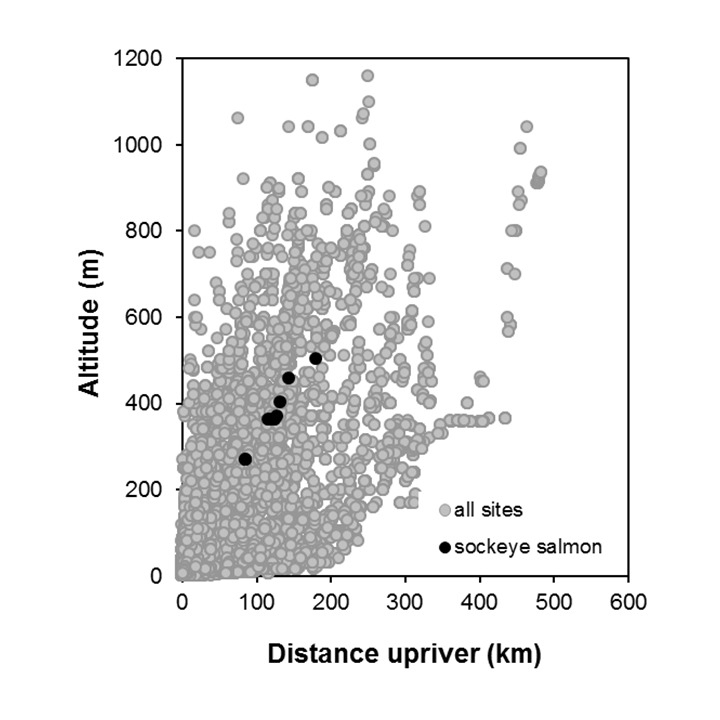Sockeye salmon
Oncorhynchus nerka (Walbaum, 1792)

Sockeye salmon stocks in New Zealand derive from a single importation of eggs that occurred in 1902. Although in their native North Pacific habitat most stocks are anadromous, stocks in New Zealand are wholly land-locked. Sockeye were released into the Waitaki River catchment, and were restricted to Lake Ohau for over 60 years where they were largely unknown to anglers. When Lake Benmore was established, this provided the sockeye with unusual but effective adult habitat, and during the 1970s stocks increased. However, when Ruataniwha Dam was completed in 1982, access to Lake Benmore was no longer possible, and today, apart from breeding populations on a couple of commercial salmon farms, sockeye salmon are virtually extinct.
Sockeye salmon co-exist in the Waitaki catchment with chinook salmon and brown and rainbow trout. The black gums of the chinook salmon distinguish this species from the sockeye. Sockeye also have a long-based anal fin (see glossary), which can be used to tell them apart from the trout species.
In North America, sockeye salmon support an important commercial fishery and are a splendid table fish with bright orange flesh. The land-locked stocks here do not grow as large as their anadromous northern counterparts and rarely exceed 1 kg in weight. Northern stocks also develop brilliant spawning colours, becoming bright red along the back and sides with a green head. These colours are much more subdued in the New Zealand stocks although a pink flush may develop along the sides of larger spawning fish. Spawning occurs in autumn and is confined to a brief period of 2–3 weeks.
![Sockeye salmon distribution map [2024]](/sites/default/files/styles/wide/public/2024-02/Sockeye%20salmon.jpeg?itok=pwBS8WTV)

